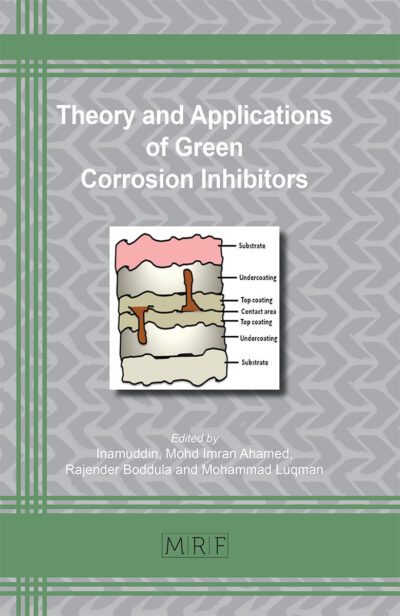–
Rolling process variation estimation using a Monte-Carlo method
WEINER Max, RENZING Christoph, SCHMIDTCHEN Matthias, PRAHL Ulrich
download PDFAbstract. No technical process is totally certain, but subjected to uncertainties. They may originate in the process itself or in the input materials and determine the precision of the product. Two questions are here especially of interest: 1) How do variations in the input workpiece evolve within the process? 2) Which process steps are crucial to influence this behavior? Answers to these questions can be obtained by analyzing production data or by numerical methods. The usage of Monte-Carlo-methods for estimation of variations and tolerances is a well proven approach in some fields, but was first applied by the authors to rolling processes. The inputs are all varied at once by drawing random samples from given distributions, so cross-dependencies are included in the analysis. The method has the favor of general applicability, i.e. the simulation procedure can be regarded as black box. So the method is generally agnostic to the used simulation core, but needs a large number of simulation evaluations, so fast simulation models are favorable.
Keywords
Rolling, Simulation, Monte Carlo, Precison, Tolerance, PyRolL
Published online 4/24/2024, 6 pages
Copyright © 2024 by the author(s)
Published under license by Materials Research Forum LLC., Millersville PA, USA
Citation: WEINER Max, RENZING Christoph, SCHMIDTCHEN Matthias, PRAHL Ulrich, Rolling process variation estimation using a Monte-Carlo method, Materials Research Proceedings, Vol. 41, pp 908-913, 2024
DOI: https://doi.org/10.21741/9781644903131-99
The article was published as article 99 of the book Material Forming
![]() Content from this work may be used under the terms of the Creative Commons Attribution 3.0 license. Any further distribution of this work must maintain attribution to the author(s) and the title of the work, journal citation and DOI.
Content from this work may be used under the terms of the Creative Commons Attribution 3.0 license. Any further distribution of this work must maintain attribution to the author(s) and the title of the work, journal citation and DOI.
References
[1] C. Lemieux, Monte Carlo and Quasi-Monte Carlo Sampling. Springer New York, 2009. https://doi.org/10.1007/978-0-387-78165-5.
[2] C.-Y. Lin, W.-H. Huang, M.-C. Jeng, and J.-L. Doong, “Study of an assembly tolerance allocation model based on Monte Carlo simulation,” Journal of Materials Processing Technology, vol. 70, no. 1, pp. 9–16, Oct. 1997. https://doi.org/ 10.1016/S0924-0136(97)00034-4.
[3] Z. Shen, G. Ameta, J. J. Shah, and J. K. Davidson, “A Comparative Study Of Tolerance Analysis Methods,” Journal of Computing and Information Science in Engineering, vol. 5, no. 3, pp. 247–256, May 2005. https://doi.org/10.1115/1.1979509.
[4] J.-Y. Dantan and A.-J. Qureshi, “Worst-case and statistical tolerance analysis based on quantified constraint satisfaction problems and Monte Carlo simulation,” Computer-Aided Design, vol. 41, no. 1, pp. 1–12, Jan. 2009. https://doi.org/10.1016/j.cad.2008.11.003.
[5] A.-J. Qureshi, J.-Y. Dantan, V. Sabri, P. Beaucaire, and N. Gayton, “A statistical tolerance analysis approach for over-constrained mechanism based on optimization and Monte Carlo simulation,” Computer-Aided Design, vol. 44, no. 2, pp. 132–142, Feb. 2012. https://doi.org/10.1016/j.cad.2011.10.004.
[6] H. Yan, X. Wu, and J. Yang, “Application of Monte Carlo Method in Tolerance Analysis,” Procedia CIRP, vol. 27, pp. 281–285, Jan. 2015. https://doi.org/10.1016/j.procir.2015.04.079.
[7] C. Rausch, M. Nahangi, C. Haas, and W. Liang, “Monte Carlo simulation for tolerance analysis in prefabrication and offsite construction,” Automation in Construction, vol. 103, pp. 300–314, Jul. 2019. https://doi.org/10.1016/j.autcon.2019.03.026.
[8] M. Weiner, M. Schmidtchen, and U. Prahl, “A New Approach for Sintering Simulation of Irregularly Shaped Powder Particles – Part I: Model Development and Case Studies,” Adv Eng Mater, Feb. 2022. https://doi.org/10.1002/adem.202101513.
[9] M. Weiner, T. Zienert, M. Schmidtchen, J. Hubálková, C. G. Aneziris, and U. Prahl, “A New Approach for Sintering Simulation of Irregularly Shaped Powder Particles – Part II: Statistical Powder Modelling,” Adv Eng Mater, Jun. 2022. https://doi.org/10.1002/adem.202200443.
[10] M. Weiner, “Estimation of rolling process variation by usage of a Monte-Carlo method,” presented at the ESAFORM 2023, May 2023, pp. 1575–1582. https://doi.org/10.21741/9781644902479-170.
[11] M. Weiner, Renzing, C., M. Stirl, and M. Schmidtchen, “PyRolL – An Extensible OpenSource Framework for Rolling Simulation“ Journal of Open Source Software, Jan. 2024. https://doi.org/10.21105/joss.06200
[12] A. Hensel and T. Spittel, Kraft- und Arbeitsbedarf bildsamer Formgebungsverfahren. Leipzig: VEB Deutscher Verlag für Grundstoffindustrie, 1978.
[13] A. Hensel, P. Poluchin, and W. Poluchin, Technologie der Metallformung, 1st ed., vol. 1. Leipzig: Deutscher Verlag für Grundstoffindustrie, 1990.
[14] G. Zouhar, Umformungskräfte beim Walzen in Streckkaliberreihen, vol. 1. Berlin: Akademie Verlag Berlin, 1960.
[15] J. H. Hitchcock and W. Trinks, “Roll neck bearings,” ASME, New York, Report of Special Research Committee on Roll Neck Bearings, 1935.
[16] A. E. Lendl, “Rolled Bars – Part I – Calculation of Spread between non parallel roll surfaces,” Iron and Steel, vol. 21, no. 14, pp. 397–402, 1948.
[17] A. E. Lendl, “Rolled Bars – Part II – Application of Spread Calculation to Pass Design,” Iron and Steel, vol. 21, no. 14, pp. 601–604, 1948.
[18] A. E. Lendl, “Rolled Bars – Part III – Application of Spread Calculation to Diamond Passes,” Iron and Steel, vol. 22, no. 12, pp. 499–501, 1949.
[19] Z. Wusatowski, Fundamentals of Rolling, vol. 1. London: Pergamon Press, 1969. https://doi.org/10.1016/B978-0-08-012276-2.50006-2
[20] PyRolL v2.1.3 Documentation. https://pyroll.readthedocs.io.














